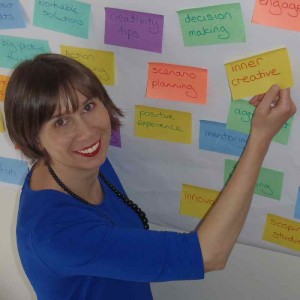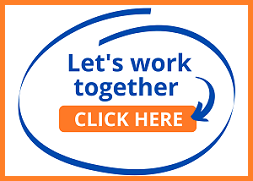Many people arrive at this site when they’ve not been successful securing an interview.
What I find after digging a little, is that people often adopt a scatter gun approach to finding their next job.
Then when that does not work they get very depressed and start to feel like a bit of a failure.
That becomes an unfortunate start to a downward spiral.
It sounds counter intuitive to say this, but narrow your focus and widen your opportunities.
Nobody likes to hire people who are vanilla in their approach.
Employers hire people who are truly aware of their strengths, who know what they want, and who have some clarity around the value they would like to add to an organisation.
There are many different ways to achieve this.
So today on this blog I’d like you to meet Natalia Walker. She has a unique approach to helping people create their future.
Natalia is Founder and Director of Inner Creative. She works with individuals and organisations to unlock their creativity to get more out of their life or business.
Over to you, Natalia.
Do you know where you’re headed? Have you got a dream job in mind that you’re working towards? Have you even got a general idea in mind?
It’s so important to have a goal or vision to work towards.
It gives you clarity and focus.
It helps you make decisions easier, and be able to channel your energy towards something bigger than your day-to-day reality.
If you have vision, you can wake up feeling confident knowing exactly where you’re headed, and what you need to do that day to work towards it.
Having a vision prevents you from drifting along through life, taking the path of least resistance, subject to the whims and expectations of others.
Meet my client Jenny.
I have changed names and details for confidentiality reasons, but I am sure her scenario below will sound somewhat familiar to you..
Jenny was in a fog. She went through the daily motions of her life on autopilot. She was in her last year of marketing at Uni, and had been used to keeping her head down and grinding through her assignments. But there was a growing unease. She felt like she was missing something.
Whenever Jenny thought about looking for placements or job opportunities, she got into a mild panic. She tried sitting down to write a list of goals, but it didn’t work. She got all worked up about the millions of things she should be doing (thinking about the practicalities, what her parents and teachers had said, what her friends would think), instead of working out what she wanted to do. So in the end, Jenny just felt more overwhelmed and confused.
Jenny knew that there had to be another way to get more inspired about where she was headed.
So lets unpack what’s really going on for Jenny here…
When you’re feeling confused or overwhelmed it’s more effective to get out of your conventional thinking patterns and ways of approaching things.
Writing a list of goals is good, but if you start there you might tap into your most expansive way of thinking.
In this situation, try creating a vision board to visually represent your goals.
It’s a particularly good tool for visual and kinesthetic learners – people who like to get hands on or see something in front of them.
So how does vision boarding work?
Vision boarding is a tool where we collect images that speak to us. Even if we can’t articulate why they speak to us at the moment, we can then use them to create an overall picture or vision for ourselves.
Vision boarding takes us out of our comfort zone, or our day-to-day reality.
It gives us a way of stretching ourselves and our possibilities.
We park the logical linear thinking part of our brain, and use images, colour and patterns to help harness our brain’s natural capacity for big picture, more intuitive thinking.
Here’s what Jenny did for her vision board to help her with her future career planning!
Jenny sat down with a bunch of different magazines and flicked through them until something in there caught her eye.
Any time she saw something (an image, a colour) that made her happy or excited she cut it out and put it in a pile beside her.
Sometimes it was a bit tricky, when her rational thinking brain stepped in, like why did she need to cut out that picture of a giraffe reaching to eat from a high tree branch?
Sometimes she just had to suspend her judgement and not worry about how giraffes related to her career vision.
Jenny had to trust that every image had some meaning and held a clue to what she wanted for her career.
After a while Jenny stopped searching, and arranged all her collected images before pasting them on to a piece of cardboard to create a entirely new picture. Jenny was proud of what she created. It made her happy just looking at it.
Now in some circles this is where the vision boarding process may end.
You have a lovely picture that makes you feel good.
But if you leave it here it may as well as stay as a dream.
You need to bring your big picture vision back to earth. You do this by using the pictures that you’ve chosen as clues or prompts to get your logical thinking back into gear as you describe what it all means.
Here’s how Jenny took her next step…
Jenny looked at the various images in her vision board then turned it over to write down:
“My ideal career involves and then listed down all the answers that came to mind like: being free to be bold and create strong messaging, working in a team where everyone comes with a different perspective (and that’s ok), making a real difference to my clients, working in a place where everyone gets excited about coming into work and things are always moving, being able to travel when I want”
Every time she ran out of things to add to her list, she turned her board over to look at the pictures for other clues and ideas. For instance, a magnifying glass reminded of her being like a detective and how she loved using research not only to find out ways to address a problem, but to find out what would work from her audience’s perspective.
Some chemical beakers prompted her to think about what attracted her to marketing in the first place – it felt like a science being able to communicate the right things to the right people to get a certain outcome.
She also noticed how she’d pasted some words as well as pictures, which reminded her of how much she loved working with designers to marry graphics with text. Even the giraffe reminded her of how she liked a bit of a challenge and to stretch a bit out of her comfort zone.
Using a vision board to identify your goals, helps you shift your perspective to something bigger than you ordinarily would.
You get answers that are richer and not so obvious, and they feel a lot more personal and relevant to what you want. Once you have the big picture you can drill it down to work out how this translate into more specific time-limited goals.
How did Jenny take this further?
Jenny used the list of things she wanted from her career to help her work out what she needed to work on for the rest of the year. It helped her decide to brush up on her graphics skills, so she’d be better at talking with graphic designers.
Jenny was also better placed to articulate what she was looking for when she trawled though job ads or talked to recruitment agencies. She had a better idea of what types of places and companies she wanted to work for. Jenny also finally joined up to LinkedIn and used some of her vision board wording to create a summary that sounded more like her and not so generic.
More importantly, Jenny felt more on top of things. There were a few things that were still a bit hazy, but in general Jenny felt like she knew where she was heading. She wouldn’t feel so bad the next time someone asked her what she was going to do when she finished Uni.
Vision boarding is not only for graduates planning out their future career. It’s useful for those wanting to change their career or re-enter the workforce.
In fact, anyone could use it at the start of every year to clarify their work priorities and what they want to achieve that year.
It’s just a big picture way of representing your goals.
Another plus of creating a vision board is that you have something tangible to hang on your wall. It becomes a visual reminder of where you’re going, so it’s easier to stay on track and not give up on what you want.
If you want more clarity about where you’re headed with your career, or are curious about vision boarding to tap into your big picture thinking potential, visit innercreative.com.au
About Natalia Walker
Natalia Walker, Founder and Director of Inner Creative, works with individuals and organisations to unlock their creativity to get more out of their life or business. She combines over 15 years of strategic planning expertise with her art practice and creative thinking know-how to help people tap into their problem solving potential.
Find out more about Inner Creative’s upcoming workshops to Plan your 2016 at innercreative.com.au.

 Follow
Follow

{ 0 comments… add one now }